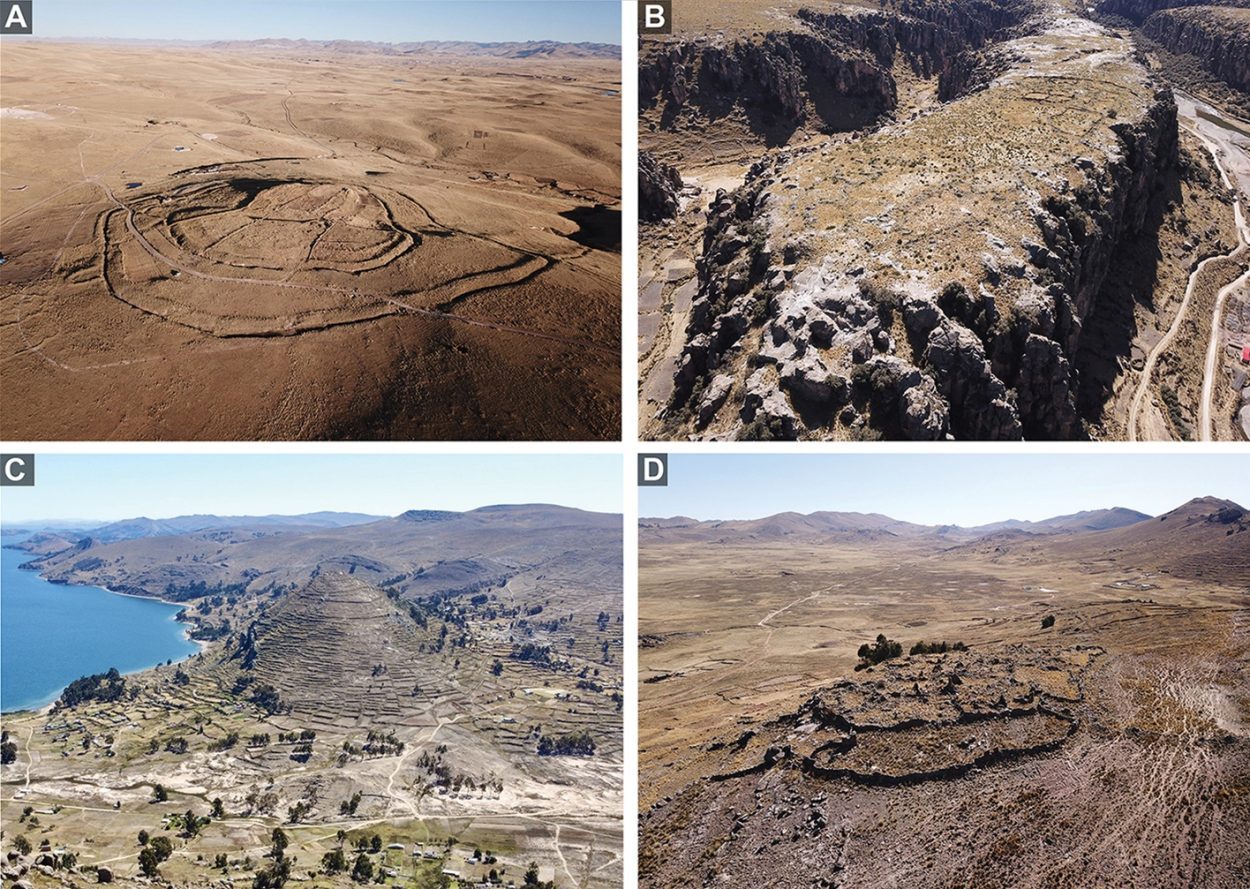Latin America
Related: About this forumStudy uses satellite imagery to identify over 1,000 Andean hillforts

Image Credit : Antiquity
By:
Mark Milligan
Date:
February 28, 2024
A new study, published in the journal Antiquity, uses satellite imagery to survey hillforts known as pukaras in the Andean highlands.
Pukaras, meaning fortress in both Quechua and Aymara, were predominantly built on natural barriers such as hills and ridges during the Late Intermediate Period (AD 1000–1450). Previous studies suggest that the necessity for these fortified sites arose from social and environmental circumstances, precipitating a period of conflict during the LIP.
What remains unanswered is the full extent and intensity of pukaras construction and distribution, which in part is limited by the difficult terrain and large spatial coverage. In addition, details on their size, defensibility, and density of residential and non-residential occupation are vague due to a bias towards studying the large, densely occupied pukaras.o
The study authors used the results of three complementary systematic satellite survey projects, supplemented with targeted ground-checking and previous field research to reveal new insights into the pukaras phenomenon. The study area covered 151 103km2 of the southern Andean highlands and identified 1249 high-confidence pukaras in the satellite imagery.
According to the researchers: “Pukaras coded as non-residential are surprisingly frequent; they are present throughout the study region in only slightly smaller numbers (n = 567) than residential pukaras ( = 682).”
More:
https://www.heritagedaily.com/2024/02/study-uses-satellite-imagery-to-identify-over-1000-andean-hillforts/150852
Judi Lynn
(163,980 posts)AncientPages.com | February 7, 2024
Conny Waters - AncientPages.com - Pukaras (in Quechua and Aymara: ‘fortress’) are naturally impregnable settlements or strategic sites from 1000–1450 AD. They were defensive fortifications (or even fortified villages) built by the central Andean people from present-day Ecuador to the Chilean Central Valley and the Argentine Northwest.

Pukaras in the survey area. Sites occupy hilltops (A, C, D, F, G, H), ridgelines (E), and high plateaus (B) with significant natural defences that include steep slopes, cliffs (B), and rock outcrops (D & E). Built defences, such as perimeter walls and ditches (A) are highly visible in satellite imagery. source
. . .
The largest pukaras are concentrated in the uplands to the south and south-east of Lake Titicaca. On the other hand, smaller ones are concentrated around the northern margins of Lake Titicaca and areas in the southern provinces of Cuzco located in the northwestern part of the survey area.
The researchers conclude that many fundamental questions regarding the pukara phenomenon in the highland Andes remain unanswered.
Despite almost two decades of archaeological investigation, more field research focusing on these constructions is needed to understand better patterns of residential and non-residential sites in which pukaras once played an essential role in the Andean societies.
More:
https://www.ancientpages.com/2024/02/07/pukaras-fortified-impenetrable-hillforts-in-the/
Judi Lynn
(163,980 posts)Pukara (Aymara and Quechuan "fortress", Hispanicized spellings pucara, pucará[1]) is a defensive hilltop site or fortification built by the prehispanic and historic inhabitants of the central Andean area (from Ecuador to central Chile and northwestern Argentina). In some cases, these sites acted as temporary fortified refuges during periods of increased conflict, while other sites show evidence for permanent occupation.[2] Emerging as a major site type during the Late Intermediate Period (c. 1000-1430AD), the pukara form was adopted in some areas by the Inca military in contested borderlands of the Inca Empire. The Spanish also referred to the Mapuche earthen forts built during the Arauco War in the 16th and 17th centuries by this term.

Part of the complex Pukará de Quitor as seen from the inside . .Pucará de Angol, Camiña, Cañete[verification needed], Nama, Quiapo, Tilcara, Turi, Pucara del Cerro La Muralla, Pukara of La Compañía, Pukara de Lasana, Pucará de Belén, Pukará de Quitor and Puka Pukara.
The Argentine Pucará ground attack aircraft is named after the fortresses.
Ruins of the Pucará de Tilcara, Argentina
Number and location of Inca pukaras
Inca pukaras were mostly located near the frontiers of the Inca Empire. The greatest concentration is in northern Ecuador, indicating that the Incas encountered the sternest resistance to their expansion there, an assumption confirmed by the early Spanish chroniclers of Inca history. North of Quito, the Incas met stiff opposition from several chiefdoms, collectively called the Pais Caranqui. The Pambamarca Fortress Complex was a group of pukaras built by the Incas to prosecute the war against the Cayambe people. Other pukaras grouped around the town of Caranqui facilitated the final defeat of the chiefdoms and their incorporation into the Inca Empire. These wars probably took place between 1490 and 1520. Peru has hundreds of towns, ruins, and locations with the name of Pucara;[4] however, it is not known how many of these sites were actually built or maintained during the Inca Empire or if were actual fortresses in first place, as it has been customary since the colony to designate as pucara whichever place seemingly appearing to have been a fortress, despite the fact that it may have never been used as such.
. . .
https://en.wikipedia.org/wiki/Pukara#
